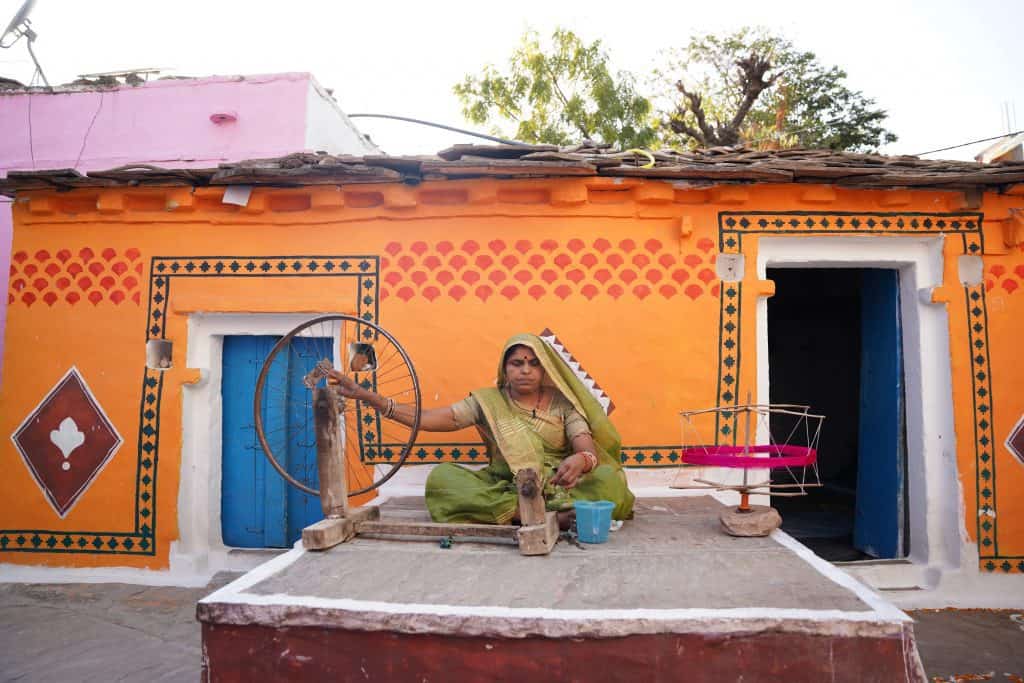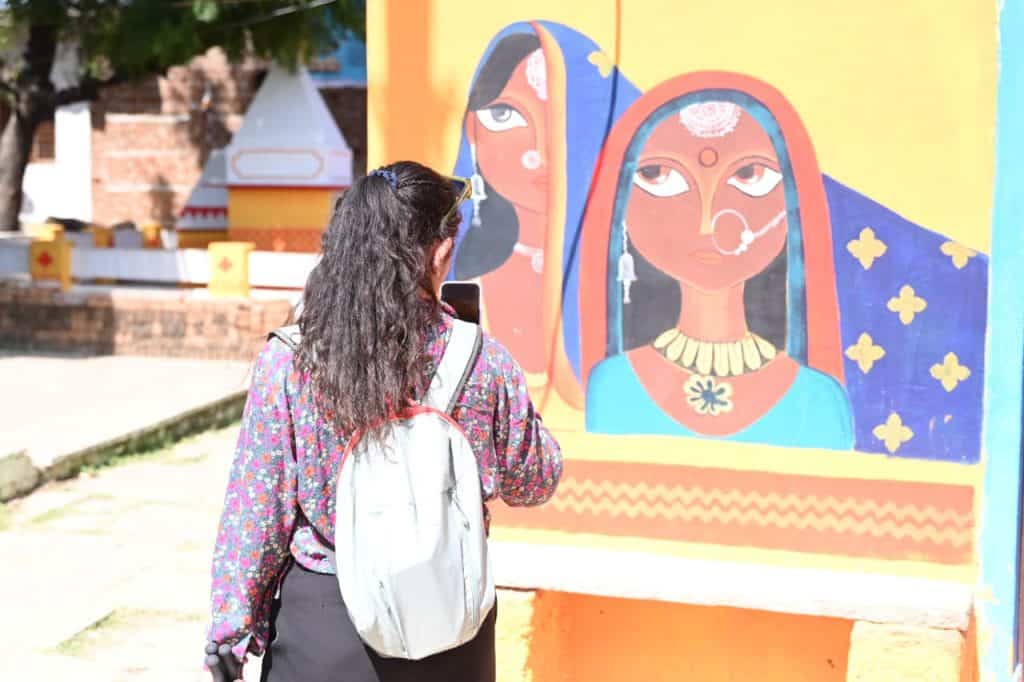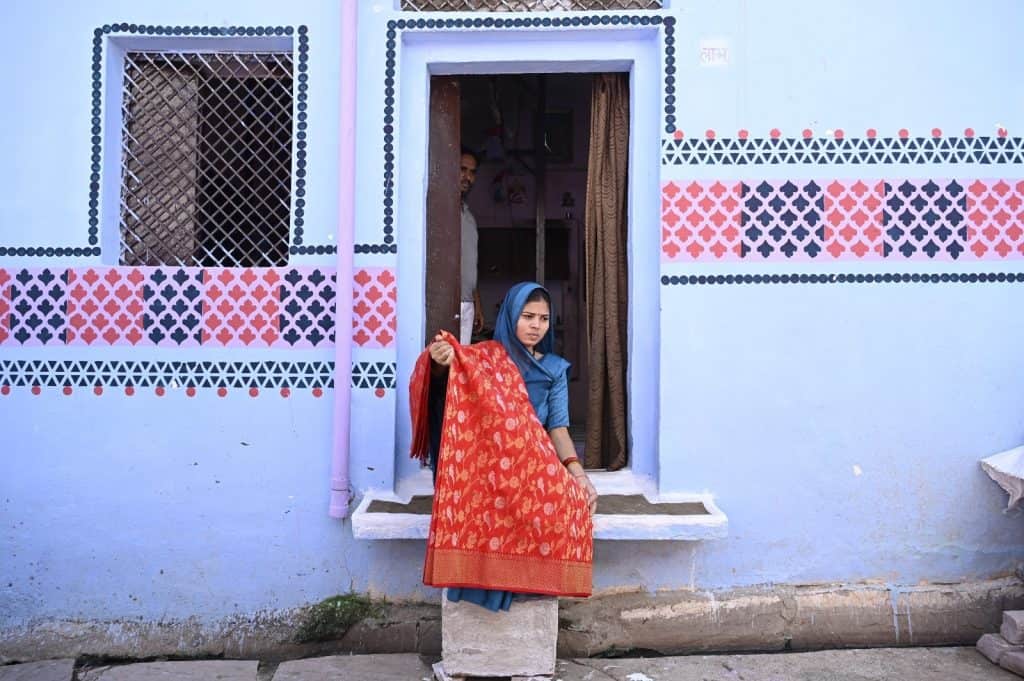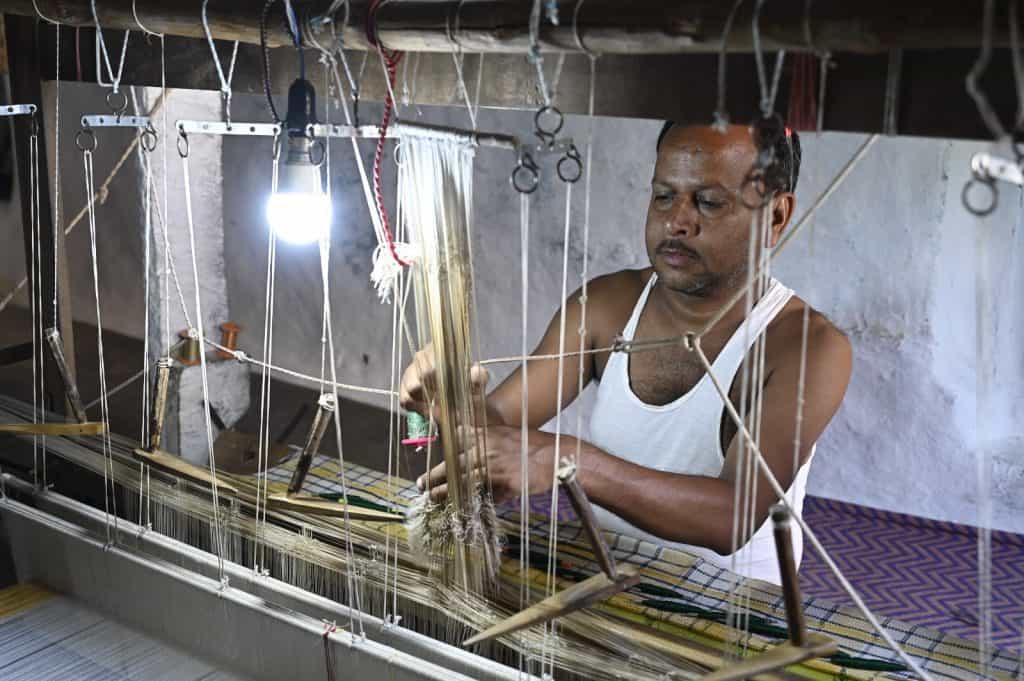Explore the vibrant world of Indian handicrafts in Madhya Pradesh’s Pranpur where tradition meets artistry.

A quaint village nestled in the heart of Madhya Pradesh is a hidden treasure for those who cherish traditional Indian handcrafts. This picturesque village is renowned for its rich heritage of weaving and pottery, where age-old techniques are preserved and passed down through generations. Walking through Pranpur feels like stepping back in time, as artisans meticulously craft stunning textiles, intricate pottery, and exquisite handmade goods, each telling a story of cultural pride and skilled craftsmanship.
Visitors are not just passive observers but can engage with the artisans, learning about the intricate processes that make each piece unique. It is more than just a destination; it’s an immersive experience for anyone passionate about the beauty and authenticity of Indian handcrafts.
Madhya Pradesh is a treasure trove for those who love textiles, with a 5000-year-old history of handloom weaving and dyeing techniques that have been passed down for centuries. Textile tourism in Madhya Pradesh offers a unique experience that goes beyond simply collecting souvenirs.
The Madhya Pradesh Tourism Board recognizes textile tourism’s value and promotes this unique travel experience. India’s first craft handloom tourism village, it developed by the Madhya Pradesh Tourism Board is renowned for its centuries-old Chanderi sarees.
The royal fabric Chanderi is incredibly thin and known for its delicate pastel hues and traditional designs. The majority of the villagers are skilled weavers, contributing to the production of this exquisite fabric for centuries taking ahead the rich handcrafting legacy. Beyond weaving, the village showcases ancient crafts like stone cutting, ceramics, and bamboo weaving.
This special initiative allows tourists to visit the weaver community in here, interact with artisans, watch the weaving process, and learn about the cultural significance of these textiles.

Nestled in the southwest of the Betwa River is situated 110 kilometres from Jhansi, 35 kilometres from Lalitpur and 3 kilometers from Chanderi. The village is surrounded by hills, magnificent lakes and lush forest.
Pranpur, a town of normal highlights, the firmament radiance of natural objects – the glades, the forests, the streams, the resounding craigs, the soak rocks, the thick timberlands, the waterfalls, the thundering winds, the liberated clouds and the profound calm blue sky – invites all the guests throughout the year. The place may be a blessing for genuine partners of nature & life. An extraordinary encounter of provincial life can be delighted in by you.
It presents a see into the each day life of weavers, potters, braisers, metal casters, shepherds, sellers, labourers, dyers, anglers and so on, packed with their essential bliss and goals. It is one of the few towns in the world that have a blend of exciting art forms, thriving culture, and genuine sentiments. It is blessed with all the riches, magnificence and craftsmanship of rural life.

The neighbourhood tenants here lead a life of innate culture, where craftsmanship has been created into callings and a way to win a livelihood. The town is additionally blessed with expansive water stores, lakes etc. where one can take a swim, appreciate a watercraft ride, or lock-in water sports. Trekking devotees can also appreciate the courageous landscape advertised by the intensely forested regions of Pranpur.
The villagers’ weavers live in some 300-year-old cottages where their ancestors have woven Chanderi sarees for centuries. Madhya Pradesh Tourism Board also have plans to open a Handloom Café in the village. Lalitpur is the closest railway station to Pranpur, while the closest airport is either Bhopal or Gwalior both 220 Km.
It is a haven for individuals who are passionate about art and crafts. Pack your bags and visit the village to see the handicrafts created by the locals.
The Rich Heritage of Chanderi – 4 km from Pranpur
Just 4 km from Pranpur, Chanderi is a small town steeped in history, culture, and tradition. Known for its exquisite handloom industry, ancient temples, and a fort that echoes the stories of bygone eras, Chanderi offers a rich tapestry of experiences for those who seek to explore India’s heritage off the beaten path.
Chanderi’s history dates back to the 11th century when it served as a significant center of trade and commerce. Over the centuries, the town was ruled by several dynasties, including the Bundela Rajputs, Mughals, and Scindias, each leaving an indelible mark on its cultural landscape. The town’s strategic location made it a focal point in many battles, adding layers of historical significance to its charm.
Today, Chanderi is perhaps best known for its handloom industry, which produces some of India’s most sought-after traditional garments. The town’s weavers, skilled in the art of blending silk and cotton, create intricate patterns and designs that have made Chanderi sarees and dupattas synonymous with elegance and craftsmanship and made it one of the famous handicrafts of Madhya Pradesh.
The Weaving Heartbeat of a Quaint Town
The essence of Chanderi lies in its exquisite fabric, which is meticulously woven in almost every household in this small town. As of 2017, Chanderi boasted around 5,000 looms and over 9,000 weavers, a true reflection of the town’s deep-rooted dedication to this age-old craft.
The renowned Chanderi sarees, distinguished by their lightweight and sheer texture, are crafted primarily from silk cotton, Chanderi cotton, and pure silk. These fabrics are then adorned with intricate motifs, embroidered with gold and silver zari, featuring designs such as Ashrafi (coins), flowers, and peacocks, making each saree a masterpiece.
Chanderi sarees are celebrated worldwide for their unique characteristics, earning them a distinguished place in the world of textiles. One of the most recognizable features of these sarees is their delicate floral motifs, or ‘Butis,’ intricately woven into the Pallu, along with their signature gossamer translucency. This transparency, which enhances the saree’s lightness and ethereal appeal, is a hallmark of Chanderi fabric and is achieved through a specialized weaving process.
The distinct transparency of Chanderi sarees is not merely a result of the weave but is consciously crafted using a single-feature quality of yarn. This particular yarn is created by not removing the natural glue from the raw yarn, a process known as non-degumming. This technique gives the fabric its characteristic shine and transparency but also makes it more fragile and brittle.

The Zari threads used in Chanderi sarees are another unique element; they are not cut off from underneath the fabric, adding to the saree’s durability and luxurious feel. However, due to the fabric’s delicate nature, it requires special care during storage. Chanderi sarees should not be kept under heavy weight or folded for long periods to maintain their pristine condition. These features contribute to the global cult status of Chanderi sarees, making them a treasured addition to any wardrobe.
For those seeking an in-depth experience of this traditional craft, a visit to the Handloom Park in Chanderi is a must. Launched in 2017, it is believed to be Asia’s first handloom park, and it offers a fascinating glimpse into the weaving process. The centre is home to around 24 master weavers and 300 traditional weavers, operating across 240 looms.
The park also features shops, trade facilitation, and facilities for warping and winding. Visitors can explore the workshops, witness the weaving process firsthand, and even enjoy a meal at the on-site eatery, making it an enriching experience that connects you directly to the heart of Chanderi’s weaving tradition.
Landmarks That Tell a Story
Chanderi is home to several notable landmarks, each a testament to its rich architectural heritage. The Chanderi Fort, perched on a hilltop, offers panoramic views of the surrounding countryside and houses several historical monuments, including the Badal Mahal, Hawa Mahal, and the Nizamuddin Shrine. Built in the 11th century, the fort was once the residence of Chanderi’s ruling dynasties and remains a symbol of the town’s storied past.
Another architectural marvel is the Koshak Mahal, constructed during the reign of Sultan Ghiyas-ud-din Khilji. This unique structure showcases the blend of Islamic and local architectural styles, making it a must-visit for history enthusiasts. Similarly, the Jama Masjid, one of India’s largest and most beautiful mosques, reflects the town’s cultural synthesis with its harmonious blend of Hindu and Islamic design elements.
When to Visit and What to Expect
The best time to visit Chanderi is from October to March when the weather is pleasant, with temperatures ranging between 10 to 25 degrees Celsius. During this period, the town is lush and green, offering ideal conditions for sightseeing and exploring its cultural treasures.
A Perfect Itinerary for Chanderi
To fully experience Chanderi, a four-day itinerary is recommended:
- Day 1: Begin your journey with a visit to the Chanderi Fort, exploring its various monuments and temples that offer a glimpse into the town’s regal past.
- Day 2: Visit the iconic Koshak Mahal and Jama Masjid, two landmarks that showcase Chanderi’s architectural brilliance.
- Day 3: Immerse yourself in the local handloom industry, witnessing the traditional weaving process, and shopping for authentic Chanderi sarees and other garments.
- Day 4: Conclude your visit by exploring the local markets, sampling Chanderi’s famous delicacies like the Chanderi Ladoo and Biryani, and soaking in the town’s vibrant culture.
Is Chanderi Worth Visiting?
Absolutely. Chanderi is a destination that offers a unique blend of history, culture, and traditional craftsmanship. Its ancient temples, forts, and thriving handloom industry make it a compelling destination for travellers looking to explore the rich heritage of India. You could be a history buff, a cultural enthusiast, a shopaholic, or simply someone who appreciates fine craftsmanship, Chanderi promises an experience that is both enriching and unforgettable.
Read more: Latest



